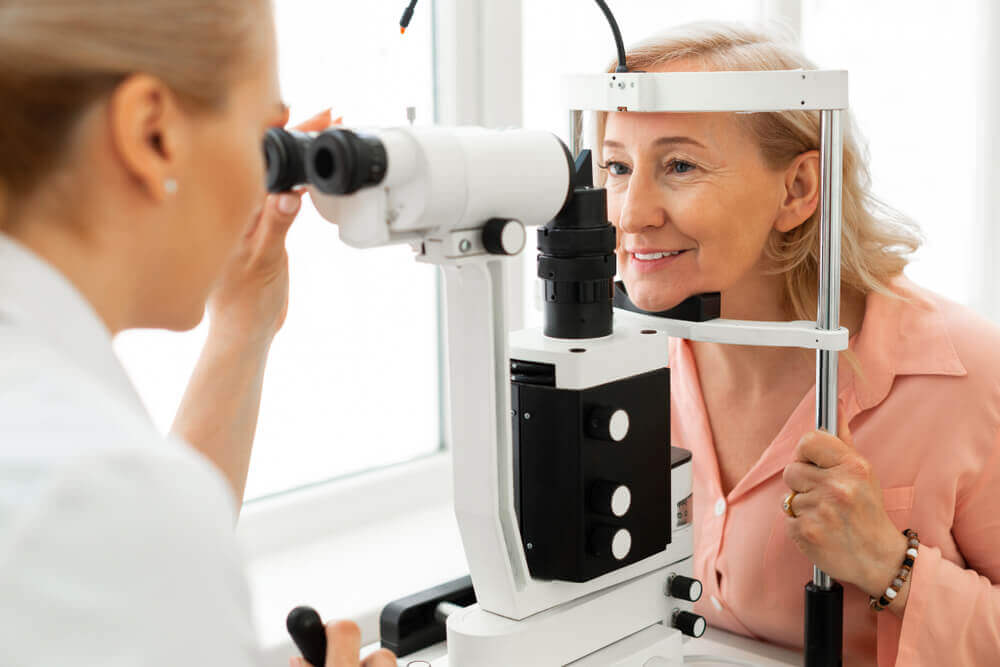Retinal Vein Occlusion (RVO) is most often related to hypertension and hardening of the arteries (atherosclerosis), resulting in the formation of a blood clot. The condition most often affects older people. Beyond atherosclerosis and hypertension, risk factors include diabetes, clotting disorders and other eye conditions like glaucoma.

Branch Retinal Vein Occlusion (BRVO) is the blockage of a smaller (branch) vein that carries blood away from the retina.
Central Retinal Vein Occlusion (CRVO) is when the main (central) vein that carries blood away from the retina becomes blocked.
Symptoms of Retinal Vein Occlusion include sudden painless blurring or vision loss in all or part of one eye.
With both types of retinal vein occlusion, vision usually worsens due to swelling of the macula. The primary goal of treatment is to dry up the retina. In most cases, medication (anti-VEGF) is used to decrease the leakage of fluid into the retina.
In more severe cases of CRVO when abnormal blood vessels have developed, we may recommend a procedure called Panretinal Photocoagulation (PRP), where a laser is used to make tiny burns to areas of the retina. This helps lower the chance of bleeding, eye pressure problems and retinal detachment.
In most cases, patients see some improvement in their vision. Our skilled retina specialist has experience diagnosing and treating retinal vein occlusion.

A retinal artery occlusion (RAO) is a blockage in one or more of the arteries of your retina. The blockage can be caused by a clot or occlusion in an artery, or a build-up of cholesterol in an artery. Retinal artery occlusions are a type of stroke and must be evaluated as an emergency.
Branch Retinal Artery Occlusion (BRAO) is the blockage of a smaller (branch) artery that carries blood to part of the retina.
Central Retinal Artery Occlusion (CRAO) is when the main (central) artery that carries blood to the retina becomes blocked.
The most common symptom of RAO is sudden, painless vision loss. It can affect all the vision of one eye, in the case of CRAO, or part of the vision in one eye, in the case of BRAO. Other symptoms include:
If you experience any of these symptoms, seek medical help right away to help prevent vision loss.

An eye examination is necessary to determine if a RAO is present. An acute RAO is considered an emergency and you will be referred to a hospital emergency room for evaluation to make sure you are not having a brain stroke as well. The most important aspect of care is to investigate the cause of the RAO and to ensure your overall cardiovascular health is optimized. In general, there are no proven treatments that can reverse the vision loss from a RAO. However, it is important that the eye be monitored for side effects after the RAO which can include high eye pressures and the growth of abnormal blood vessels. Abnormal blood vessels may require either injections or laser to control their growth.
The vision loss after RAO is variable. In some cases, vision loss can be significant and permanent. Our skilled retina specialist has experience diagnosing and treating Retinal Artery Occlusion.
The Mann Eye Institute is a leading eye care facility with seventeen locations in Humble, West Humble, Houston, Central Austin, North Austin, Sugar Land, Katy, Spring, The Woodlands, Livingston, Bay City, Pearland, Baytown, Tomball and Cleveland, Texas. With various locations in the Houston and Austin areas we can provide the full continuum of care, including; designer eyewear and eye care needs, LASIK eye surgery, cataract surgery, premium lens implants and dry eye treatment options. If you are seeking expert eye doctors in Texas contact us today!
Copperfield Office
6860 Highway 6 North, Ste. A
Houston, TX 77084
(281) 500-9605
Pearland Office
10223 Broadway St., Ste. J
Pearland, TX 77584
(281) 971-9332
Spring Office
2616 FM 2920 Ste. I
Spring, TX 77388
(281) 353-8300
Tomball Office
14079 FM 2920
Tomball, TX 77377
(346) 701-4029
Katy Office
750 Westgreen Blvd.
Katy, TX 77450
(281) 392-3937
Humble - Deerbrook Office
9802 FM 1960 W, Ste. 110
Humble, Texas 77338
(281) 446-9333
Sugar Land Office
6424 E. Riverpark Dr.
Sugar Land, TX 77479
(713) 580-2525
Humble - S. Memorial Office
18850 S. Memorial Blvd.
Humble, TX 77338
(281) 446-7900
Livingston Office
1601 US-59 Loop North, Ste. 100
Livingston, Texas 77351
(936) 327-3937
Cleveland Office
429 West Southline
Cleveland, TX 77327
(281) 592-4343
Bay City Office
3612 Avenue F
Bay City, TX 77414
(979) 244-1450
Baytown Office
4750 East Freeway
Baytown, TX 77521
(281) 421-2020
South Austin Office
2600 Via Fortuna, Ste. 400
Austin, TX 78746
(512) 327-4123
North Austin Office
4314 W. Braker Lane Ste. 215
Austin, TX 78759
(512) 200-3937
Sun City Office
1530 Sun City Blvd., Ste. 150
Georgetown, TX 78633
(512) 327-3792